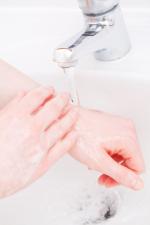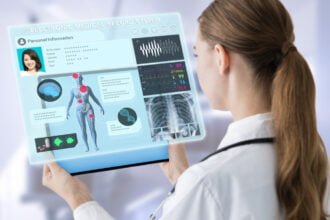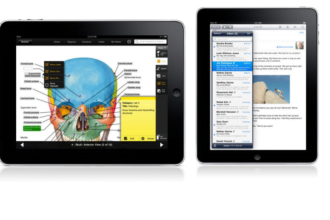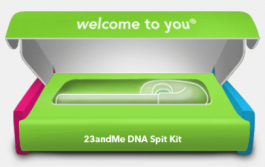 Flu season. Deadly super bugs. Whatever the threat of disease or infection, hand washing, as simple and obvious at it seems, is always one of the first and highest recommended tactics for combatting the spread of contagious germs and bacteria. Physicians and infection control specialists recommend proper hand hygiene techniques to the general public. But do they adhere to these techniques themselves?
Flu season. Deadly super bugs. Whatever the threat of disease or infection, hand washing, as simple and obvious at it seems, is always one of the first and highest recommended tactics for combatting the spread of contagious germs and bacteria. Physicians and infection control specialists recommend proper hand hygiene techniques to the general public. But do they adhere to these techniques themselves?
 Flu season. Deadly super bugs. Whatever the threat of disease or infection, hand washing, as simple and obvious at it seems, is always one of the first and highest recommended tactics for combatting the spread of contagious germs and bacteria. Physicians and infection control specialists recommend proper hand hygiene techniques to the general public. But do they adhere to these techniques themselves?
Flu season. Deadly super bugs. Whatever the threat of disease or infection, hand washing, as simple and obvious at it seems, is always one of the first and highest recommended tactics for combatting the spread of contagious germs and bacteria. Physicians and infection control specialists recommend proper hand hygiene techniques to the general public. But do they adhere to these techniques themselves?
A new technology is now helping enforce what many may find to be a surprisingly low level of hospital hand hygiene compliance. And the methodology is seemingly simple – the group mentality. With wall-mounted dispensers containing tiny chips that report the number of “pumps” back to a main computer system, hospitals are now making notable strides in increasing compliance and are well on the road to reducing the estimated ninety-nine thousand deaths each year caused by preventable healthcare-associated infections. That’s what I call smarter.
More than 160 years ago, Ignaz Semmelweiss, an Austrian physician, proved the link between hand hygiene and reducing infections and deaths. Yet still today, we face this staggering statistic. And until the advent of this technology, “Direct Observation” had been considered the “gold standard” for measuring healthcare worker behavior. At its most basic form, a hospital staff member stands behind a doctor or nurse and checks off a box on a form with pen, paper and clipboard. One word comes to my mind with this type of process: Antiquated.
So throw out the pen and paper. This new and emerging electronic group monitoring system is being shown in research studies to be the most reliable and effective way to measure.
Here’s how it works. The Group Monitoring System (GMS™) holds staff accountable as an entire group without any pointed fingers, Big Brother video-taping or colleagues peeking over shoulders with the direct observation method. This system collects dispenser usage data (how many times healthcare workers within a specific unit actually washed and/or sanitized their hands).
Further, it works in adherence with the World Health Organization’s Five Moments for hand hygiene, which includes hand washing or sanitizing before touching a patient, before aseptic procedure, after body fluid exposure, after touching a patient and after touching patient surroundings.
I want to save lives and I’m positive you feel the same. Let’s work smarter together. Implementing innovative, and extremely cost-effective, standards-based technologies can create real change and save lives. Let’s take a stand to protect the two million patients who should not contract preventable healthcare-associated infections, and help prevent the ninety-nine thousand deaths caused each year. It’s time we take a harder look at hand hygiene in the healthcare space and do everything possible, including the simple act of properly washing our hands, to save lives.
(handwashing / shutterstock)








